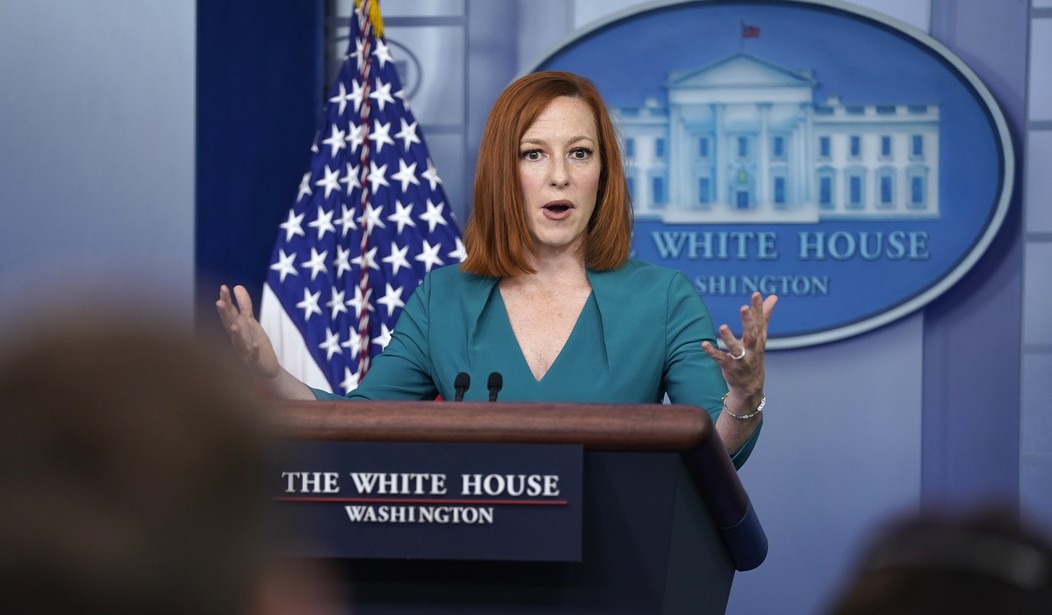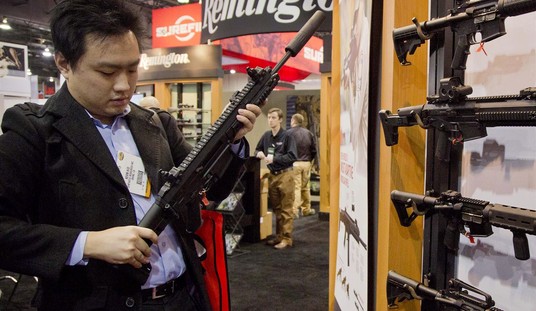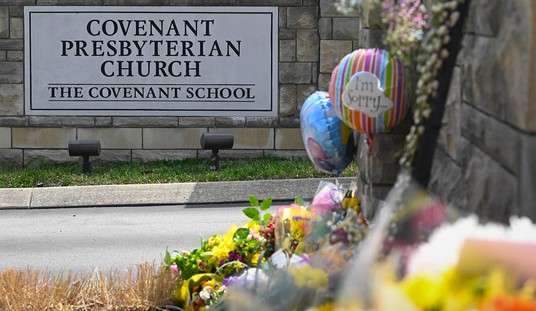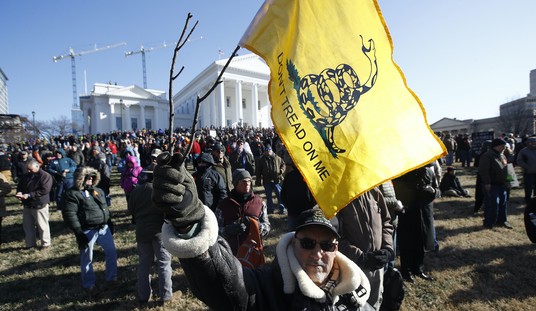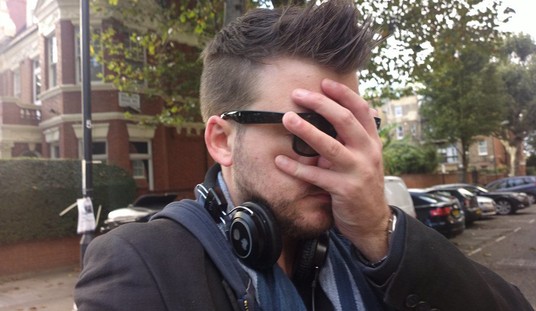On paper, the administration’s strategy should be easy enough to implement. “Strike forces” are being rolled out in Democratic strongholds like New York, Los Angeles, and Chicago. The ATF is targeting supposed “rogue gun dealers” and gun traffickers. Big city mayors are already spending millions of dollars on summer jobs programs and other strategies designed to focus on at-risk youth without involving police.
None of these tactics take a long amount of time to put together, which begs the question: when will we start to see some results. FOX News reporter Peter Doocy posed that question to White House press secretary Jen Psaki on Monday, only for Psaki to dance around a substantive answer.
“Well,” Psaki responded. “I think you and I both know that when there’s been rising crime rates across the country, including in Chicago, for 18 months or more, that unfortunately, it’s not going to turn on a dime.”
The press secretary said Chicago is one of five cities in the country in which the federal government is working with local leaders and police to keep guns off the streets.
“The Department of Justice has a group in there to help address the selling of guns that are getting into the hands of people who shouldn’t have them,” she said. “We’re working closely with the mayor and local elected officials. They have benefitted a huge amount from the federal assistance and funding the president fought to include in the American Rescue plan.”
There’s no doubt that cities like Chicago are going to receive tons of cash from the Biden administration ostensibly to address violent crime. As we noted earlier today, however, there are some serious questions in Chicago about how the mayor has allocated millions of dollars in existing funds to anti-violence groups. The Chicago Sun-Times has been asking questions, but they can’t get any more of a straight answer from the mayor than Doocy got from Psaki.
The plan, “Our City, Our Safety,” proposed flooding the 15 most violent community areas with resources — not just violence intervention programs but help with jobs and housing and health.
But nearly a year into the effort, gun violence is up in at least nine of the areas. The numbers are far starker when you look at how crime has risen since 2019, when Lightfoot took office, before the current spike in gun violence swept the city and the country.
Fatal shootings in West Pullman are up 566% from this time two years ago, North Lawndale 201%, South Lawndale 160%, Chatham 116%. Only three of the areas targeted by City Hall are down from 2019: West Englewood, Roseland and Humboldt Park.
Yet the administration has yet to funnel any extra assistance to some of those dangerous neighborhoods, particularly on the Far South Side, according to the city’s website. The West Pullman community area, for example, has received none of the $36 million released by City Hall under the plan this year.
Maybe Doocy could ask Psaki a follow up question at Tuesday’s briefing. Something like “What steps has the White House taken to ensure that the billions of dollars in funding to localities will go where it’s needed most and won’t be wasted by local politicians and their cronies?”
All snark aside, the strategies unveiled by the Biden administration aren’t meant to be solely long-term endeavors. Violent crime is spiking now, and the White House really wants to see some headlines about a decline in shootings and homicides in the short term in order to turn around the president’s declining poll numbers. Psaki can snipe that crime can’t “turn around on a dime,” but it certainly exploded around the country relatively quickly. Why can’t it drop just as fast as it spiked?
As it turns out, it can, at least if the right strategies are deployed. As the Department of Justice described in a 2001 report on how Operation Ceasefire led to a more than 50% decline in Boston’s juvenile homicide rate, one bust of a group called the Intervale Posse was a key factor in reducing violence across the city.
On August 29, 1996, an early-morning sweep resulted in the arrest of 15 key members of the Intervale Posse on Federal drug charges and arrests of 8 more on State charges. Sam Patrick’s first question to the arresting officers was telling.“State or Federal?” he asked.When the answer was Federal, he hung his head and made no reply. The sweep made headlines in Boston for weeks.
The Working Group wanted to make sure that those on the streets understood exactly what had happened. In a flurry of forums at the courthouse, with young inmates being held in DYS lockup, and in the Roxbury middle school that many students from the Intervale area attended, plus in innumerable one-on-one conversations on the street and through a new flier, the Working Group told its story .
“We warned them; they didn’t listen,” the Working Group said: The papers say this was a drug operation, and it was, but it really happened because of the violence, and it’s violence that will draw anything similar in the future. We have BPD, we have DEA, we have ATF, we have probation, we have parole, we have DYS, we have the U.S.Attorney, we have the county District Attorney, we have everybody. If we focus on you, you can’t win, so don’t make us [act].”
In what felt like a particularly useful step, the Working Group, with U.S. Attorney Donald Stern in attendance, met with all Streetworkers, some 40 strong, at Warren Street at the end of May and asked for their help putting the message on the streets. Head Streetworker Tracy Litthcut had developed his own relationships with Working Group members, and his own trust in them, but the same was not necessarily true of his rank-and-file associates.
“Is Tracy naming names to you?” some demanded.“No,” Gary French replied.“We frankly don’t need him for that.We just want him, and you, if you’re willing, to tell the kids on the streets how business is being done now.”
In one particularly tense exchange, an older Streetworker asked, “Is everybody who might sell drugs on the street facing these huge Federal penalties? My son, God forbid, might choose to do a little of that; is he going to be exposed?”
“No,” Stern replied.“This is about violence. Only the key players in the most violent groups have to worry, and they’ll get fair warning, just like Intervale did.”
“Ah,” said the Streetworker.“In that case, the crew I work with in Mattapan asked me to send you guys a message. The message is, we got it, we’re not doing anything, leave us alone.”
The Intervale operation marked a turning point. Gang violence in Boston declined abruptly.“I almost took my beeper in to have it checked,” Gary French said at the time.“It just stopped going off.” To everybody’s surprise it was unnecessary to repeat the crackdowns or move out gradually along the gang network as originally planned. The Working Group continued to meet regularly and occasionally to reach out to gangs with warnings, but no further operations on either the Bowdoin Street or Intervale scale were necessary.
As long as you’re targeting the most violent offenders and delivering consequences for those acts of violence (as well as opportunities to escape from the gang lifestyle whenever possible), it doesn’t take long at all to see results. Unfortunately, this isn’t what the Biden administration is doing. They’re devoting most of their energy to going after the supply of firearms, rather than reducing demand for guns among those most likely to use them in violent crimes.
As a result, we could be waiting quite a while for Biden’s policy to yield any substantive results. Crime should start to dip when autumn arrives, at least if the current crime wave follows historical trends. If that happens, don’t expect Democrats to thank Mother Nature for the respite from shootings, carjackings, and street robberies. It may be a change in the weather that leads to slightly safer streets, but if we do see crime rates fall in a few months, Psaki and the Democrats will be sure to give all the credit to Sleepy Joe.

